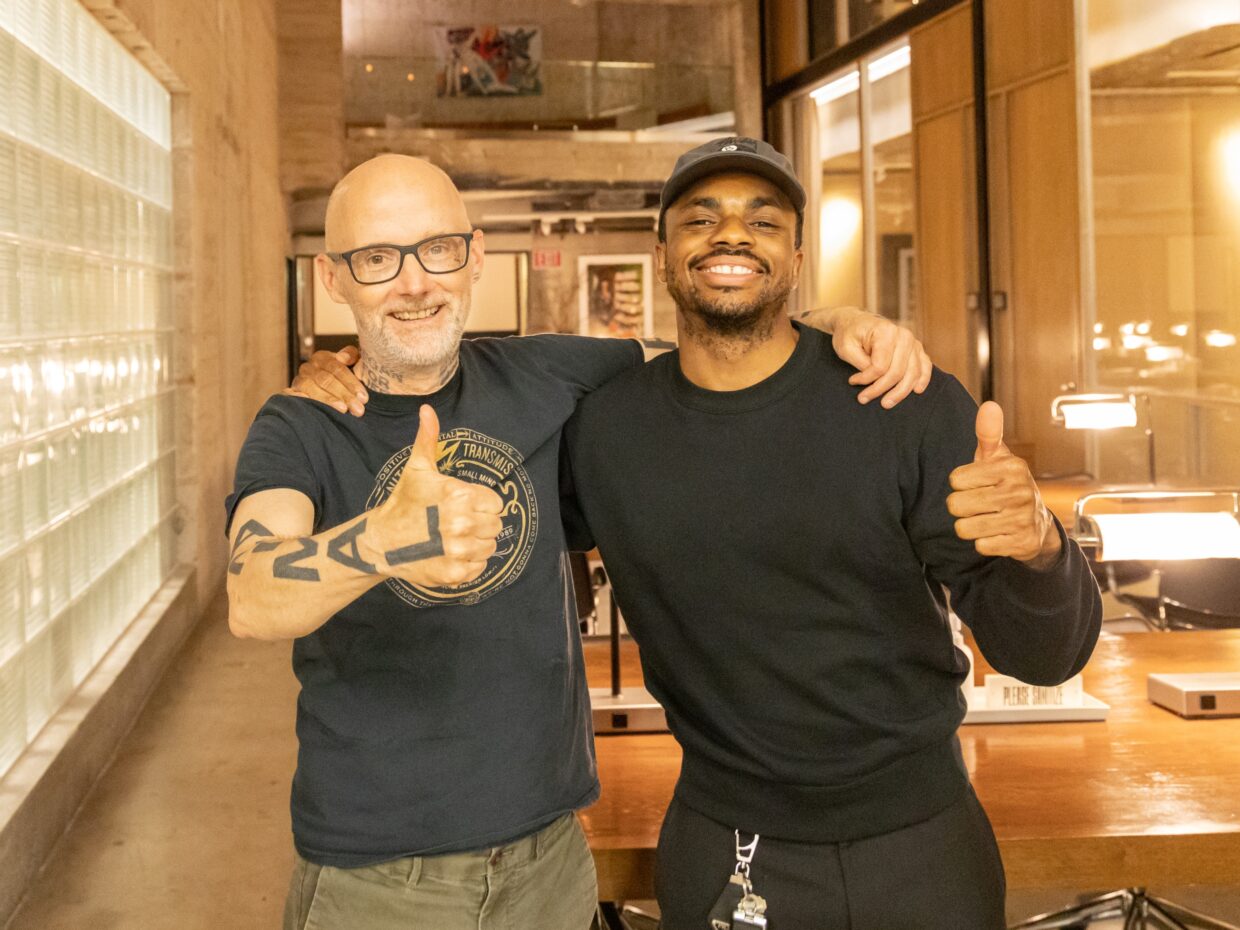Moby (real name Richard Melville) was born in New York City and witnessed Hip-Hop’s evolution firsthand. In a recent interview with AllHipHop, the pioneering electronic DJ/producer touched on his respect for classic Hip-Hop artists, including Big Daddy Kane.
Kane, who rose to prominence with albums like Long Live the Kane (1988) and It’s a Big Daddy Thing (1989), dominated the scene throughout the 1980s and early ’90s. Combined with his impeccable style and undeniable swagger, Kane always made an entrance.
Looking back, Moby remembered DJing at Club Mars in New York City’s Meatpacking District around the late ’80s, when Kane strolled in.
“Big Daddy Kane, 3rd Bass—the only good white Hip-Hop that’s ever been made—and Run-DMC are some of my favorites,” he said. “One time I was DJing on the second floor of Mars and all these rappers would come in. But the first time Kane came in, it was like seeing royalty. There was no one bigger than him. When he walked in with his fade, his phenomenal suit and everything else, it was like the Pope had just entered the building.
“I remember him standing by the bar. I can see it so clearly, like from the DJ booth, trying not to look too much because like, that’s Big Daddy Kane standing by the bar, drinking champagne and surrounded by security or whatever. Ultra Magnetic MCs, Run-DMC, Rakim, De La Soul—they were all amazing—but no one was more royal at that time than Kane.”
Moby’s ambitions as a DJ forced him to dive into every genre. As he explained, “When I was DJing in the ‘80s, to be to be a working DJ back then, you essentially had to play everything. If someone said, ‘Hey, can you play dancehall reggae?’ You’d be like, ‘Yep, I can do that.’ Or, “Can you play old soul?” Sure, I can do that. Can you play house music, Hip-Hop?’
“So you had to love everything. Also, it was a really exciting time because all these genres had just been invented. When you’re playing house records in 1989, house music was invented two years before.”
Moby went on to release dozens of albums, including his commercial breakthrough, Play. Released in 1999, the project—now celebrating its 25th anniversary—spawned the crossover hits “South Side” and “Porcelain.” But he often cites Hip-Hop acts like Eric B. & Rakim and Public Enemy as some of his early influences. In fact, he and Public Enemy did a song together called “Make Love F### War” in 2004.
“I hadn’t heard it in ages, but it’s really good,” he recalled. “I love the message, and I love when he put it out. It was f###### awesome. I hadn’t heard it in forever and I was like, ‘Wow, this is actually really good.'”
Moby recently re-launched his mobygratis website, which he originally put up in 2005. It allows users to reimagine roughly 2,000 tracks Moby has made throughout the course of his career, one that has continually reinvented itself along with the way Hip-Hop beats are made. He noticed a shift in the 1980s.
“There was a change in Hip-Hop when all the producers started using samplers,” he added. “Early Hip-Hop was cute, but it was kind of a little goofy because it was like the Fat Boys and Whodini. It was fun but a little goofy. Then all of a sudden, The Bomb Squad, Rakim and Prince Paul got their hands on samplers, and that’s when the world really changed.”
Featured image: Moby with Vince Staples (Photo credit: Sorrell Scrutton)
